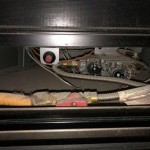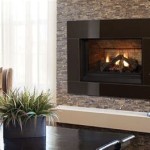Fireplace Pilot Light Stays On: Understanding and Addressing the Issue
A fireplace pilot light that remains constantly lit can be a source of concern for homeowners. While a continuously burning pilot light is necessary for the fireplace to function correctly, understanding its purpose, potential issues, and troubleshooting steps is crucial for ensuring safety and efficiency. This article will explore common reasons why a fireplace pilot light might stay on, potential problems associated with a persistent pilot light, and steps that can be taken to address the situation.
The pilot light serves as a small, continuous flame that ignites the main burner of the fireplace when heat is requested. It’s a crucial component of many gas-powered fireplaces, providing a reliable ignition source without the need for manual lighting each time the fireplace is used. The pilot light receives a constant supply of gas through a small tube, which is then ignited by a spark igniter or a standing pilot. A thermocouple or thermopile senses the heat from the pilot light, and if the flame is present, it sends a signal to the gas valve, allowing the main burner to operate when the thermostat calls for heat.
The design of a continuously burning pilot light aims to provide immediate access to warmth. The presence of a constant flame, however, also means continuous gas consumption, albeit in small quantities. This continuous operation can lead to questions about energy efficiency, safety, and potential wear and tear on fireplace components. A pilot light that consistently runs without issue is an expected element of a functioning fireplace, but when problems arise, it's essential to investigate and resolve them promptly.
Understanding the Thermocouple and Thermopile Function
The thermocouple and thermopile are essential safety components in gas fireplaces. The thermocouple is a safety device that generates a small electrical current when heated by the pilot light flame. This current holds the gas valve open, allowing gas to flow to the main burner when the thermostat requests heat. If the pilot light goes out, the thermocouple cools, the electrical current stops, and the gas valve closes, preventing gas from leaking into the home.
A thermopile operates similarly to a thermocouple but generates a larger electrical current and is typically used in fireplaces with more complex control systems. The larger current generated by the thermopile can power the fireplace's control module, which then manages the gas flow to the main burner. Like the thermocouple, the thermopile shuts off the gas supply if the pilot light is extinguished.
If a thermocouple or thermopile is faulty, it can lead to various issues. Most commonly, a failing thermocouple will lead to the pilot light extinguishing itself shortly after the igniter button is released. In rare cases, a stuck or shorted thermocouple can cause the pilot light to burn continuously even when the fireplace should be off entirely. This is far less common than the pilot failing to stay lit, however.
In essence, these devices are crucial for safe operation. Their proper functionality ensures that the gas supply is cut off when the pilot light is not present, preventing gas leaks and potential hazards. Regular inspection and maintenance of the thermocouple and thermopile are advisable to ensure they function correctly.
Potential Problems Associated with a Continuously Burning Pilot Light
While a constantly lit pilot light is normal, several issues can arise that might require attention. One common concern is energy consumption. A continuously burning pilot light uses a small but steady amount of gas, which can contribute to higher gas bills over time. While the cost might seem insignificant, it's a continuous expense that can add up over the heating season.
Another potential problem is heat generation. A constant pilot light emits heat, even when the main burner is not in use. This heat can contribute to higher room temperatures, potentially impacting the efficiency of other heating systems in the home. In warmer months, the pilot light's heat output might make the room uncomfortably warm, increasing the need for air conditioning.
Safety is a paramount concern. While gas fireplaces are designed with safety features, a continuously burning pilot light presents a small but constant risk of gas leaks. A malfunctioning gas valve or gas line could lead to a buildup of gas, creating a potential fire or explosion hazard. Regular inspections of the gas lines and fireplace components are crucial to mitigate these risks.
Component wear and tear is another consideration. The continuous operation of the pilot light exposes the thermocouple or thermopile to constant heat, which can potentially shorten its lifespan. Similarly, the gas valve and other components can experience wear and tear over time due to the continuous gas flow. Regular maintenance and replacement of worn components can help prevent malfunctions and ensure the fireplace operates safely and efficiently.
Troubleshooting Steps and Solutions
When addressing a fireplace pilot light that remains constantly lit, a systematic approach to troubleshooting is advisable. The initial step is to visually inspect the pilot light flame. A healthy pilot light flame should be blue with a slight yellow tip. A weak, flickering, or orange flame might indicate a problem with the gas supply or a dirty pilot light orifice.
Cleaning the pilot light orifice is a common troubleshooting step. Dust, debris, and carbon buildup can restrict gas flow to the pilot light, causing a weak or unstable flame. In many cases, a can of compressed air, like that used for cleaning electronics, can be used to dislodge dust and debris from the pilot light assembly. Alternatively, a small wire or needle can be used to clear the orifice, but care must be taken not to damage the gas line.
Inspecting the thermocouple or thermopile is another crucial step. Check for signs of damage, corrosion, or loose connections. Use a multimeter to test the thermocouple's output voltage while the pilot light is lit. A low voltage reading indicates that the thermocouple might be failing and needs to be replaced. Similar testing can be performed on the thermopile.
Examining the gas valve is also essential. The gas valve controls the flow of gas to the pilot light and main burner. If the gas valve is malfunctioning, it might be allowing gas to flow to the pilot light even when the fireplace is turned off. Replacing the gas valve might be necessary if it's determined to be faulty. Gas valve diagnosis and replacement should always be performed by a qualified technician.
Checking the gas line and connections for leaks is critical. Use a soap and water solution to check for leaks around the gas line connections. If bubbles form, it indicates a gas leak. Tighten the connections or replace the gas line as needed. It is imperative to use a gas line rated for the type of gas being used. Gas line repair, or even identification of gas leaks, should be performed by a qualified professional.
Consulting a qualified technician is recommended when the problem persists or if one is uncomfortable working with gas lines or electrical components. A qualified technician can diagnose the problem accurately and perform the necessary repairs or replacements safely. They can also provide guidance on maintaining the fireplace and ensuring its safe and efficient operation.
Preventative maintenance is beneficial in preventing issues from arising. Schedule regular maintenance checks with a qualified technician to inspect and clean the fireplace components, ensuring optimal performance and safety. Regular maintenance can also help identify potential problems early on, preventing costly repairs in the future.
Ultimately, a fireplace pilot light that stays on is a normal aspect of most gas fireplaces. However, being proactive in understanding the system's operation, including the role of the thermocouple/thermopile and gas valve, and knowing how to identify and address potential problems is essential for maintaining a safe and efficient home heating system.

Gas Fireplace Won T Stay Lit Magic Touch Mechanical

Should I Turn Off The Pilot Light In Spring B C Comfort Fireplace Hvac Repair Installation

Best And No 1 Pilot Light Elegant Fireside Patio

Gas Fireplace Won T Stay Lit Magic Touch Mechanical

Fireplace Won T Stay Lit This Is How You Fix It

Simple Diy Fix Fireplace Pilot Light Won T Stay Lit How To It Napoleon Goes Out

Does My Pilot Light Need To Stay On All Year Round We Love Fire
Is It Okay If My Pilot Light Therma Coupler Red Hot When Having The On A Gas Fireplace Quora

Is It Okay To Leave A Pilot Light On For Gas Fireplace
My Gas Fireplace Pilot Light Works Perfectly However When I Flip The Switch For Rest Of To Turn On Nothing Happens What Quora








